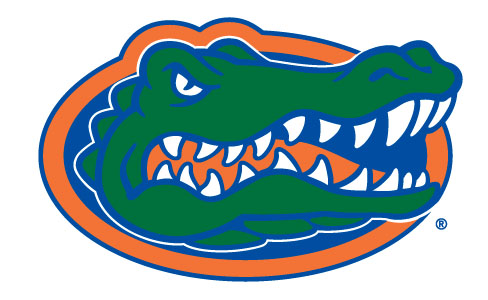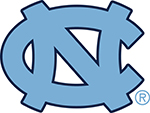Eight For Omaha For 2018


 Florida wins its first national championship. Could it repeat in 2018? (Photo by Peter Aiken/Getty Images)
Florida wins its first national championship. Could it repeat in 2018? (Photo by Peter Aiken/Getty Images)
Florida captured its first national championship in program history Tuesday, completing a sweep of Louisiana State in the College World Series finals with a 6-1 victory. It was the fulfillment of the program’s long-held promise for coach Kevin O’Sullivan and the Gators.
The 2017 NCAA Tournament largely stuck to the script after an unpredictable 2016 season finished with Coastal Carolina on top. This year, five national seeds made it to Omaha, where no lower ranked team won a game until LSU upset Oregon State in the final four.
At the conclusion of the finals every year, Baseball America looks ahead to the next year’s CWS. From our predictions at the end of 2016, we correctly picked five of the eight teams in the field, including the final four teams—Florida, LSU, Oregon State and Texas Christian. Florida State was also correctly picked to reach Omaha, while Louisville was listed among the projected super regional participants. But Cal State Fullerton and Texas A&M came from off the board to reach the CWS.
Still, making predictions a year in advance for any sport isn’t easy and college baseball presents its own unique challenges. The draft changes the complexion of teams every year and while many players have already signed, until the deadline passes on July 7, surprises can still dramatically alter the landscape. Even then, player development and injuries will continue to shape teams throughout the summer and fall.
All that means our preseason rankings in January will look a bit different from this far-too-early list. But it makes for a fun thought exercise as we ponder seven months without college baseball games that count.
Arkansas

After finishing in last place in the Southeastern Conference in 2016, Arkansas came roaring back this spring to host a regional for the first time since 2010. The Razorbacks are well-positioned to build on that success in 2017. Righthander Blaine Knight, ranked No. 87 on the BA 500 as a draft-eligible sophomore, but will return to school to again front the rotation. The Razorbacks will also welcome back righthander Isaiah Campbell, who had been expected to be their ace before an elbow sidelined him all spring. That pair will give Arkansas a formidable 1-2 punch, with incoming freshman righthander Bryce Bonnin, ranked No. 73 on the BA 500, a strong candidate to round out the rotation. Arkansas’ lineup flexed its muscles this spring, leading the SEC with 83 home runs, and should be strong again even after losing first baseman Chad Spanberger. Catcher Grant Koch is playing for USA Baseball’s Collegiate National Team this summer and will be back for his junior year, as will shortstop Jax Biggers, the Razorbacks’ leading hitter. The SEC West again looks to be loaded, but Arkansas has what it takes to rise to the top.
Cal State Fullerton

The Titans have reached the CWS in two of the past three seasons and will have the pieces to make another trip to Omaha in 2018. Fullerton has some key players to replace next season, as starters John Gavin and Connor Seabold, outfielder Scott Hurst and shortstop Timmy Richards all moved on to pro ball. But the holes left by those departures can largely be filled by players already in the program. Righthander Colton Eastman may have been Fullerton’s most talented pitcher this spring, but was sidelined for nearly three months by an elbow injury. Having him healthy at the top of the rotation gives Fullerton a true Friday starter capable of beating anyone in the country. Righthander Gavin Velasquez filled his spot in the rotation ably this spring and will be a solid No. 2 starter next season, with closer Brett Conine returning to anchor the bullpen. Outfielder Ruben Cardenas also missed most of the year with a back injury, and his return will help plug a hole in the lineup. Sahid Valenzuela will slide from second base to shortstop to replace Richards. A Big West team has advanced to the CWS for four straight years, and Fullerton has the talent to extend that streak next season.
Florida

The defending champions will have some holes to fill next season, but they also have enough talent to be the first team since South Carolina in 2010-11 to repeat as national champion. Florida loses ace Alex Faedo, the CWS Most Outstanding Player, as well as three members of its starting lineup (shortstop Dalton Guthrie, outfielder Ryan Larson and catcher Mike Rivera). But nearly everyone else that appeared for the Gators in Omaha will be back next season, including starters Brady Singer and Jackson Kowar, likely first-round picks next year, All-American closer Michael Byrne, outfielder Nelson Maldonado, their leading hitter, and first baseman/catcher J.J. Schwarz, their leading power hitter. To that, Florida adds another stellar recruiting class headlined by shortstop Brady McConnell, who ranked No. 39 on the BA 500 and will likely be the highest-ranked position player in the country not to sign. Florida’s young bullpen and lineup will both have another year of experience and more depth. With Kevin O’Sullivan coaching that kind of talent, the Gators should again be competing for a national championship.
Florida State

It wasn’t easy for Florida State this season, but, ultimately, the Seminoles ended the season in Omaha as expected. They will have to contend with some key losses in the infield, as second baseman Matt Henderson, shortstop Taylor Walls and third baseman Dylan Busby will all depart, as will DH Quincy Nieporte. All-Freshman first baseman Drew Mendoza will move across the diamond to fill one of the holes on the left side of the infield, and getting a full, healthy season out of him will be a boost for Florida State. The Seminoles also bring back outfielders J.C. Flowers and Jackson Lueck and catcher Cal Raleigh, giving the lineup plenty of star power. On the mound, Florida State returns its rotation of Tyler Holton, Drew Parrish and Cole Sands intact. Florida State looks to have a complete roster, and coach Mike Martin will have a chance to break the career wins record next season and win the national championship that has eluded him for so long.
North Carolina

After missing the NCAA Tournament in back-to-back years, North Carolina bounced back in a big way in 2017, winning the Atlantic Coast Conference Coastal Division and earning the No. 2 national seed. North Carolina’s tournament run came to an abrupt end when it was upset at home by Davidson in regionals, but a strong returning core gives it a chance to improve on that showing next year. The Tar Heels brought in the No. 2 recruiting class in the country last fall, and that group paid immediate dividends. Even more will be asked of them now. All-Freshman righthander Gianluca Dalatri will likely be joined in the rotation by classmates Tyler Baum and Austin Bergner, while some combination of Michael Busch, Ike Freeman and Ashton McGee will fill the infield and DH spots along with Kyle Datres and Zack Gahagan. All-American closer Josh Hiatt is back, as well as catcher Cody Roberts. Replacing the trio of righthander J.B. Bukauskas, center fielder Brian Miller and shortstop Logan Warmoth, all of whom were drafted in the top 36 picks, won’t be easy, but there is no shortage of talent on North Carolina’s roster as it looks to get back to Omaha for the first time since 2013.
Oregon State

The Beavers were ranked No. 1 for 10 straight weeks this season, had two separate 23-game winning streaks and went to Omaha as the favorites to win the national championship. They fell short of that goal this year, but, with most of the team coming back, will enter next season as one of the top national title contenders. Pac-12 Conference player of the year Nick Madrigal and Cadyn Grenier will again form one of the best double-play combinations in the country, and center fielder Steven Kwan and catcher Adley Rutschman keep Oregon State strong up the middle. The Beavers will have to replace first baseman K.J. Harrison, their cleanup hitter, but Rutshman’s continued offensive development should provide sufficient protection for Trevor Larnach in the heart of the order. On the mound, Oregon State led the nation with a 1.93 ERA this season and, while repeating that kind of performance seems improbable, will again be tough to score against. Lefthander Luke Heimlich fronted the staff, going 11-1, 0.76, but sat out super regionals and the CWS after the revelation that he pleaded guilty to felony child molestation as a teenager. He is expected to return to the mound next season, however. Righthander Bryce Fehmel also returns, and All-Freshman reliever Jake Mulholland could round out another strong rotation. Even if the Beavers don’t replicate their remarkable .903 winning percentage, they will be a force to be reckoned with.
Texas Christian
![]()
The Horned Frogs have advanced to the CWS for four straight years. No team has made it to Omaha five years in a row since Stanford did so from 1999-2003. It won’t be easy for TCU to get back to the CWS again, not after losing two starting pitchers and six members of its starting lineup. But even without the likes of righthander Brian Howard, catcher Evan Skoug and outfielder Austen Wade, the Horned Frogs have an impressive collection of talent. Friday starter Jared Janczak and All-Freshman lefthander Nick Lodolo return to the rotation, where they will likely be joined by either Charles King or Sean Wymer, both of whom stood out in long relief this season. Closer Durbin Feltman returns and pitching coach Kirk Saarloos has a bevy of other talented arms. The lineup will look significantly different after so many departures, but slugger Luken Baker gives the Horned Frogs a big piece to build around. It won’t be easy for coach Jim Schlossnagle, but the last time TCU was supposed to take a step back was in 2016, and it finished that season ranked No. 3 in the country.
Texas Tech

After not winning the Big 12 Conference for nearly 20 years, the Red Raiders have now won back-to-back titles. They fell short of their third trip to the CWS in four seasons, tripped up at home by Sam Houston State in regionals, but will have their sights set on Omaha again in 2018. Texas Tech returns its entire rotation of All-American lefthander Steven Gingery and righthanders Davis Martin and Ryan Shetter. Offensively, the Red Raiders will miss first baseman Hunter Hargrove, the co-Big 12 Conference player of the year, shortstop Orlando Garcia and center fielder Tanner Gardner. But the Red Raiders had a strong group of freshmen in the everyday lineup, led by All-Freshmen third baseman Josh Jung and outfielder Grant Little, who will be ready to take on even larger roles in the offense as sophomores. Classmate John McMillion showed his powerful potential on the mound and at the plate this spring, and will get better as he refines the rough edges of his game with more experience. Expectations will be high for Texas Tech, but coach Tim Tadlock will have the Red Raiders ready to handle them.
Eight More For Super Regionals: Auburn, Indiana, Louisiana State, Louisville, Mississippi, Stanford, Texas, UCLA.

Comments are closed.